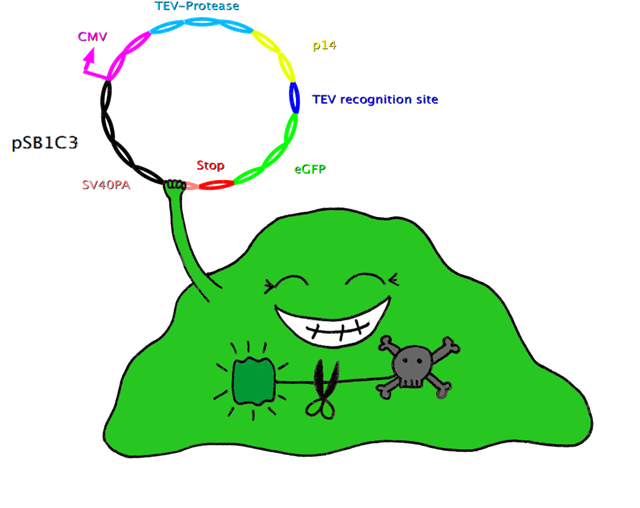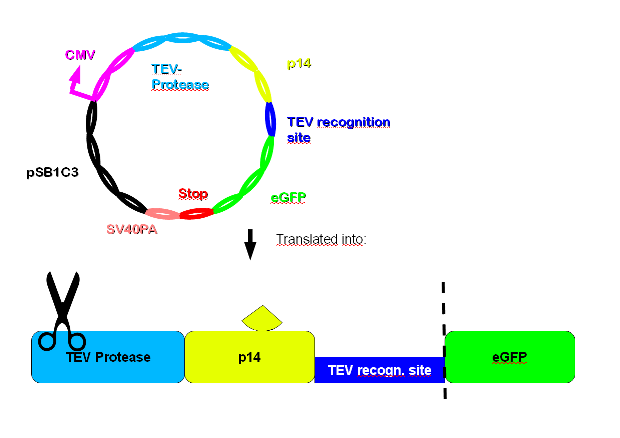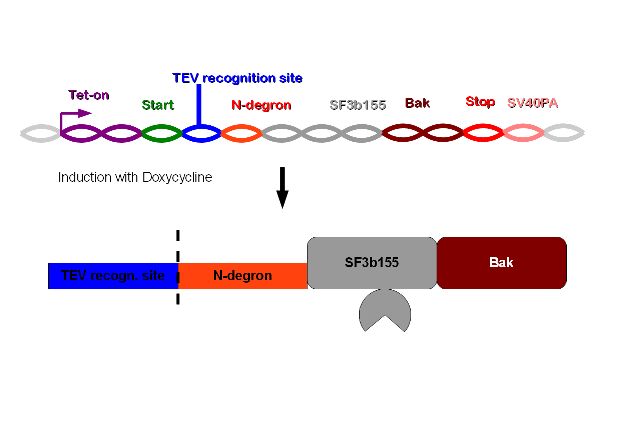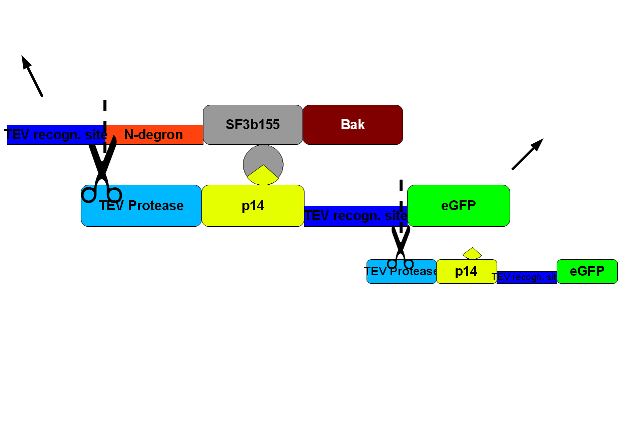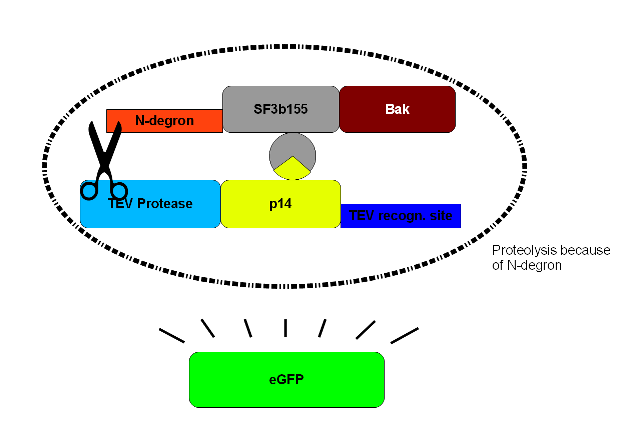Team:LMU-Munich/Cut'N'survive
From 2010.igem.org
| Line 1: | Line 1: | ||
{{:Team:LMU-Munich/Templates/Page Header}} | {{:Team:LMU-Munich/Templates/Page Header}} | ||
| - | + | ||
==Cut'N'Survive System== | ==Cut'N'Survive System== | ||
| - | In this system, the apoptosis triggering protein Bak is controlled by the Tet-on system for inducible apoptosis. Bak can be degraded when the target gene is successfully expressed, therefore ensuring the survival of the wanted cells. Bak is combined with a certain interacting protein p14*, TEV-protease recognition site and N-Degron. This construct should be stably integrated into the cell line genome. The target plasmid consists of eGFP as target gene, another TEV- protease recognition site, the interaction partner of p14* and TEV-protease. When the target plasmid is expressed, the interaction proteins bring the TEV-protease together with its recognition site; TEV cuts Bak, together with N-Degron, free from the rest of the protein complex, where N-Degron with its free N-terminal acts as degradation signal of protease in the cells. Thus this system enables selection of cells expressing the target gene while the cells not transfected undergo induced apoptosis. | + | In this system, the apoptosis triggering protein Bak is controlled by the Tet-on system for inducible apoptosis. Bak can be degraded when the target gene is successfully expressed, therefore ensuring the survival of the wanted cells. Bak is combined with a certain interacting protein p14*, TEV-protease recognition site and N-Degron. This construct should be stably integrated into the cell line genome. The target plasmid consists of eGFP as target gene, another TEV-[[Image:cnsZelle.png|300px|Logo|right]] protease recognition site, the interaction partner of p14* and TEV-protease. When the target plasmid is expressed, the interaction proteins bring the TEV-protease together with its recognition site; TEV cuts Bak, together with N-Degron, free from the rest of the protein complex, where N-Degron with its free N-terminal acts as degradation signal of protease in the cells. Thus this system enables selection of cells expressing the target gene while the cells not transfected undergo induced apoptosis. |
For more details of the functional principle, please click: [[Team:LMU-Munich/Cut'N'survive/Functional_Principle|Cut'N'Survive Functional Principle]] | For more details of the functional principle, please click: [[Team:LMU-Munich/Cut'N'survive/Functional_Principle|Cut'N'Survive Functional Principle]] | ||
Revision as of 14:38, 25 October 2010
For more details of the functional principle, please click: Cut'N'Survive Functional Principle


![]()
![]()







![]()
![]()

![]()
Cut'N'Survive System
In this system, the apoptosis triggering protein Bak is controlled by the Tet-on system for inducible apoptosis. Bak can be degraded when the target gene is successfully expressed, therefore ensuring the survival of the wanted cells. Bak is combined with a certain interacting protein p14*, TEV-protease recognition site and N-Degron. This construct should be stably integrated into the cell line genome. The target plasmid consists of eGFP as target gene, another TEV- protease recognition site, the interaction partner of p14* and TEV-protease. When the target plasmid is expressed, the interaction proteins bring the TEV-protease together with its recognition site; TEV cuts Bak, together with N-Degron, free from the rest of the protein complex, where N-Degron with its free N-terminal acts as degradation signal of protease in the cells. Thus this system enables selection of cells expressing the target gene while the cells not transfected undergo induced apoptosis.
![]()
![]()

 "
"
